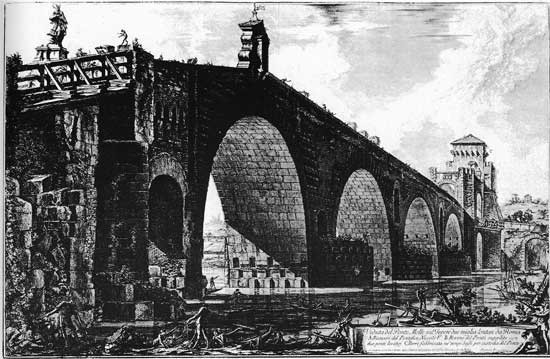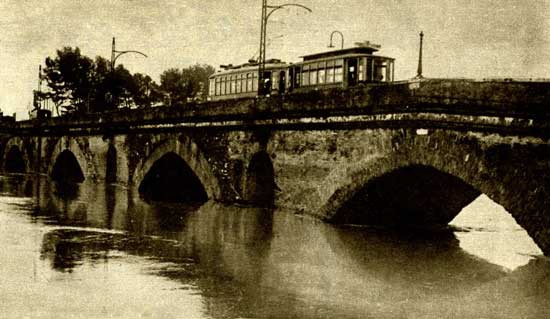Countless padlocks have adorned one of Rome’s bridges for quite some time, witnessing promises of eternal love (or almost) of couples in love. It is no longer possible to see these seals of love, which had created some problems to the structure and to the streetlights, so as to be removed in 2007.
We are on the north bank of the Tiber and we are talking of the Ponte Milvio bridge. It is one of Rome’s oldest bridges and it is located in particularly strategic and functional area at the time of the ancient Romans. It was built with the intention of prolonging the Via Flaminia in the fourth century BC, in the area where the streets Cassia, Flaminia, Clodia, and Veientana merged together.
The ancient Romans called it Ponte Mollo, from the expression a mollo which means sunk in water, because during the overflow of the river Tiber, it would be the first bridge to be submerged. The first notice of this bridge dates back to 207 B.C., during the Second Punic War. In this historical period, the structure had to be made of wood and its construction is linked to a certain Molvius of the gens Molvia. Molvius was probably one of the names of the magistrates who approved the reconstruction of the bridge in masonry.
Other sources, however, tend to link the name of the bridge to the disastrous state in which it often found during the course of history. Because of the frequency of these situations, the bridge was subjected to various restorations and reconstructions such as the one connected to the censor Marcus Aemilius Scaurus, dating back to 109 BC. Such operations continued until modern times. Among these, at the beginning of the nineteenth century, restoration services were promoted by Pope Pius VII, and entrusted to Giuseppe Valadier. He rebuilt the arches of the bridge and raised a beautiful tower in the Neoclassical style.

There is also another episode that made the bridge particularly famous in the history of Rome and in the entire Western culture. It concerns the conversion of Emperor Constantine, the Christian emperor who in the fourth century faught in battle Maxentius in the vicinity of Ponte Milvia. It was 312 A.D. and Constantine emerged not only victorious from this battle, but also architect of a religious renewal that undoubtedly changed the course of Western history.
Constantine promoted religious freedom in 313 with the Edict of Milan. The Christian religion became thus an important factor of cohesion and propaganda for Constantine and sources say that his conversion was almost miraculous. It is said that Constantine would have dreamt of the Christian God the night before the clash with his opponent, and that on that same night he had a premonition of his victory. He would have had to represent, however, on the shields of his soldiers a symbol formed with the initial letters of Christ’s name, The Greek letters X and P.
Today the Ponte Milvio bridge is part of the areas Della Vittoria and Tor di Quinto and is located not far from Piazza Mancini. It is a site of interest not only for its structure but also for its surroundings, due to the presence of interesting spots and many bars, restaurants and clubs. You can walk round the area, visit the Ponte Milvio bridge with its turret and go to the Foro Italico and to the auditorium Parco della Musica. And not only. If you like biking, you can discover the area on your two wheels, or even rent it if you don’t happen to own one.
We also know that once there was a society of artists near the Ponte Milvio Bridge, the Pontemolle Gesellschaft, founded in the nineteenth century. Amongst its members were Thorvaldsen, Franz, Cornelius, Reinhart, Millin and several other artistic personalities. That is why artists from all over Europe gathered in this area, walking a territory that at the time must have seemed particularly striking, thanks to the presence of Valadier turret, especially to the eyes of those who had come to Rome from far away.



